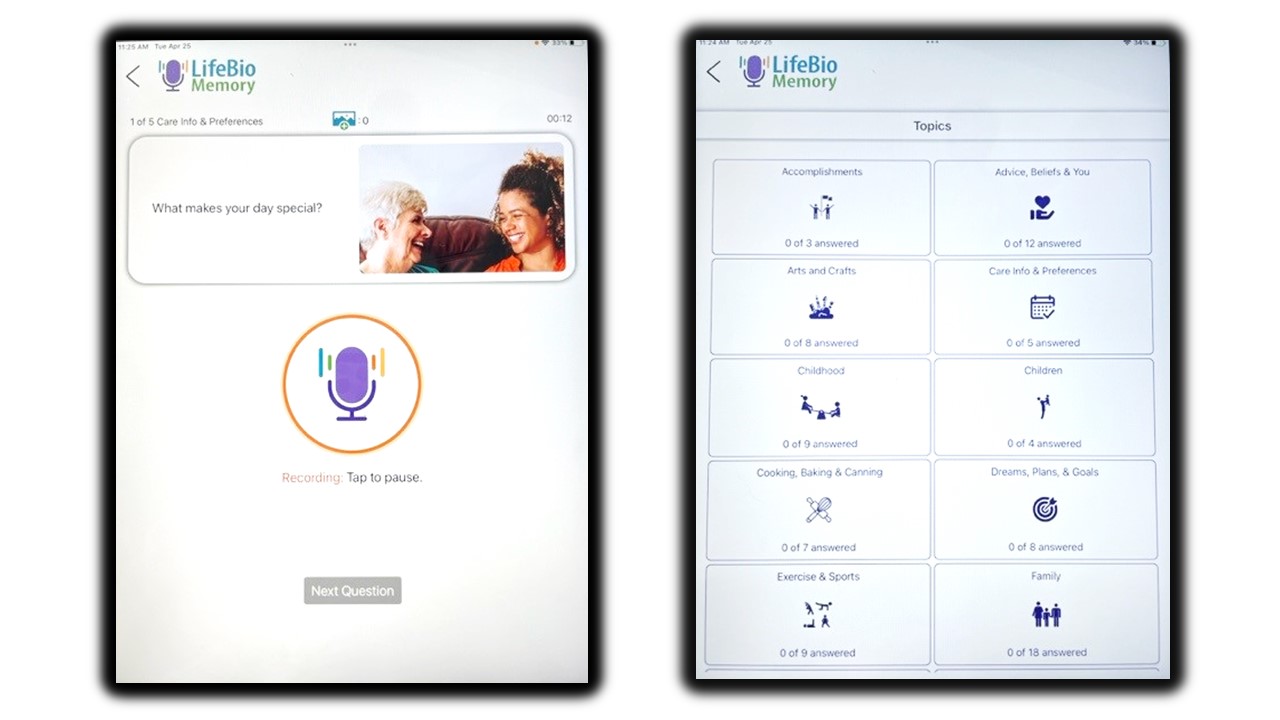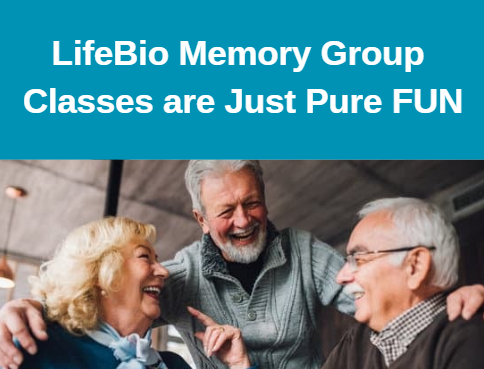Storytelling and Reminiscence Therapy for People with Alzheimer's or another form of dementia
People with memory problems can benefit greatly from reminiscence and life review processes. Unfortunately, too often memories are lost and forgotten before this critical information is captured. Professional caregivers and family caregivers are more and more interested in asking the right questions and recording the answers too
--as this information could be essential in delivering long-term care. Knowing life stories will be critical for maintaining authentic, meaningful conversation and connection--especially if memories continue to fade. Essentially, we need to walk in someone's shoes and experience their past so that their can be greater understanding now and in the future. Actions, words, and emotions will make much more sense and be put into a better context when this person is deeply known by those around him or her.
The Mayo Clinic neurology department discovered how valuable the information could be. They adopted reminiscence programming (using LifeBio's Life Story Journal) because they see the importance of helping someone with early-stage Alzheimer's to record memories, but they also found that the process helped them celebrate their life experiences, see their accomplishments, connect with their family caregiver more, and record information that only this person can share. Because reminiscence promotes feelings of happiness and purposefulness, it is also a great activity for Alzheimer's patients.
Keep these tips in mind when recording the biographies of people with Alzheimer's or another form of dementia
1. The process of recording life stories and memories is very important. Preferably the writing and thinking about memories shouldn't be just a one-time event. Instead, the ideal situation is for the creation of a life story to be an ongoing process where the person is engaged in activities to stimulate memory and to continually build a strong relationship with one or more caregivers. Reminiscence is stimulating the hippocampus of the brain where memories are stored and also working the prefrontal cortex (executive function) so this is excellent cognitive fitness exercise. Keep in mind that the process of capturing the memories, assembling pictures, and discussion is as important as any finished product--it could become a beautiful memory book for someone with Alzheimer's.. Remembering is also a fun thing to do for many older people.
2. The more we know, the more we love. People with memory loss are sometimes difficult to care for, but knowing someone's life story can help a professional caregiver or family caregiver see this person with new eyes. This incredible, unique person has led a rich and interesting life with people, times, and places to share. It's important to see them as a child, a youth, a worker, a parent, and a grandparent -- a holistic view of this person's life journey. Every day is still and gift and people with Alzheimer's give love to their caregivers and need to receive special care and love too--many do teach us and share wisdom even with the disease. There is always more caring and empathy when the whole person is understood. It can also help a caregiver understand behaviors that may occur with Alzheimer's--things sometimes tied to an event from the past or childhood.
3. Incorporate memories into daily care if possible. How can this person's home include many chances for reminiscence and more interaction today? Perhaps a memory journal can be an ongoing source for discussion as someone comes to visit whether in a private home or in a nursing home or assisted living setting. It works out well when there are pictures found to complement the memories and they are DISPLAYED as part of a loved one's care plan (although the person shouldn't be quizzed to remember people's names in the pictures). It doesn't help anyone if these memories are hidden in a book in a drawer somewhere. Make it easy for nurses, geriatric care managers, social workers, family members or other visitors to see and use the information gathered in daily conversation.
4. Storytelling is a give and take experience. A person with memory loss may reach a point where it is very hard to communicate. If we've accomplished the goal of recording stories and memories, caregivers can still be the ones sharing when memories fade. The movie, The Notebook, was an excellent example of how a caregiver could continue to connect, relate, and share the story again after her memories were lost. We are operating with one hand tied behind our backs if we don't know at least some of this person's distant memories of childhood and teen years. BUT if we don't know the individual's past experiences, then it is time to connect eye-to-eye, face-to-face, hand-to-hand and tell one of our own stories. Talk about a time your car or truck broke down, talk about your childhood friends and games you played, talk about your last vacation. Watch and see if this conversation connects. The door of communication should stay open...even if we're not sure how much the person is able to understand.
There are many good reasons to be reminiscing and recording memories for Alzheimer's patients. With the millions of people who are expected to be affected now and in the future, the time is now to begin capturing life stories without delay.
_____________________________________
Beth Sanders is the author of the Life Story Journal and Memory Journal and the CEO of http://www.lifebio.com/. LifeBio serves over 50 long-term care communities, nursing homes, home care agencies, and hospitals by providing easy tools for capturing life stories.


